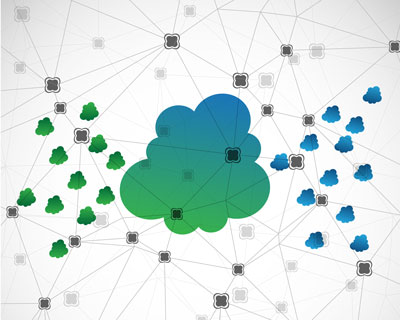For the first time, a team of neuroscientists from the UK, France, the USA, Portugal and Switzerland has developed an algorithm that not only realistically mimics the architecture of the mammalian olfactory system, but is also able to correctly “untangle” various scents contained in an odorant mixture. Our brains accomplish this many times a day with no apparent effort, but little is known about the way they do it.
Odors never come alone. We are constantly being exposed to mixtures of scents. But, as incredible as it may seem, we are pretty good (though not as good as other animals, such as dogs) at separating a number of them from each other.
“You always smell a mixture of odors, like when you enter a forest, there are mushrooms, dead leaves, flowers, animals and so on,” says co-author Alexandre Pouget, from the University of Geneva, in Switzerland. “So the hard problem is this: given a mixture of odors, how do you come up with a list of the odors in the mixture?”

Figure: Artificial neural network that realistically mimics the olfactory system performs well at separating mixed odors. Image credit: Gil Costa.
Why is this problem so hard to solve? Very simply put, because there are too many odors in the world compared to the recognition capabilities of the olfactory system. More to the point, the olfactory system pathway starts with olfactory neurons, located in the so-called olfactory bulb, in the nose, which receive scent molecules, transform these chemical signals into electrical signals and pass them on to the brain for processing.
Now, the thing is that each of these olfactory neurons recognizes one type of odor through the receptors on its surface – and in mammals, there are about 1,000 different types of these receptors. On the other hand, there exists hundreds of thousands of potential odors in a given mixture! With so many scents around and so little information collected about them by the nose, it seems pretty hard to imagine how the brain can hit on any correct identification at all.
To tackle this hurdle, the authors had to mitigate their expectations, so to speak, about the mathematical model they wanted to build.
“To solve this problem mathematically, we needed two tricks,” Pouget explains. “First, to give up on wanting to come up with a unique solution, and instead ask: what is the probability of each combination of odors? This is called a probabilistic approach.”
The second “trick” was to stipulate, a priori, that odor mixtures typically contain a small number of odors – just three or four – thus assigning very small probabilities to mixtures with tens of thousands of odors,” which seems realistic enough. “It then became possible to design an algorithm that would solve the problem,” Pouget says.
The algorithm, which in fact runs on a computational model called a neural network (in this case made up of several hundreds of virtual neurons), simulates the interplay – or “feedback loop” – between the olfactory neurons in the nose and neurons located in a part of the brain called the piriform cortex. The latter’s task being, based on the input from the olfactory neurons, to guess the identity of the odors contained in the mixture.
And last but not least: given that the neural network needs to refine its successive guesses in order to zoom in on the correct odors, this loop has to be repeated many times.
So how does the algorithm actually proceed? “First, it comes up with a guess about which mixture of odors best accounts for the observed activity of the olfactory neurons,” Pouget further explains. “Second, it generates a prediction as to what the pattern of activation across the olfactory neurons should look like given this guess. If the actual and predicted pattern of the olfactory neurons differ, the algorithm then uses this error to update its prediction about the content of the mixture. And it does this until the two patterns converge, keeping in mind that small mixtures are more likely.”
“Our circuit model suggests that the olfactory bulb is the place where the error is computed, while the piriform cortex generates the hypothesis about the odor mixtures,” adds Pouget.
A future step, he says, will be to determine experimentally if this is what effectively happens in real brains.
In the meantime, Pouget is already thinking about a possible application of the algorithm… to wine science. “We could train artificial neurons to help with wine recognition and with predicting how a given wine is going to age,” he speculates.
Text by Ana Gerschenfeld, Champalimaud Centre for the Unknown
Reference
A probabilistic approach to demixing odors. Agnieszka Grabska-Barwińska, Simon Barthelmé, Jeff Beck, Zachary F Mainen, Alexandre Pouget & Peter E Latham. Nature Neuroscience 20, 98–106(2017)doi:10.1038/nn.4444.


































